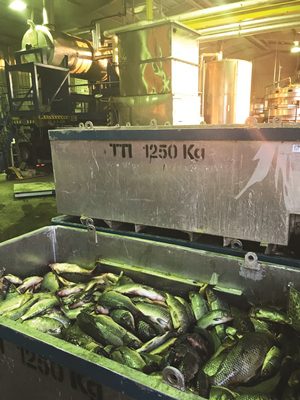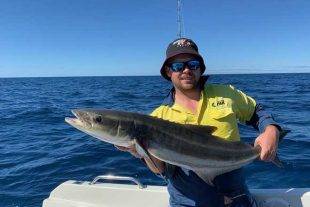
CURTIN University researchers are investigating options for the sustainable use of the dead carp biomass that could result from the potential release of syprinid herpesvirus 3 (carp virus), under the National Carp Control Plan.
The research project ‘Assessment of options for utilisation of virus-infected carp’, involves laboratory-based processing trials as well as commercial-scale trials of processes that produce usable carp-based products including fertilisers, compost, fishmeal and aquaculture feed ingredients.
Lead researcher Dr Janet Howieson from the School of Molecular and Life Sciences at Curtin University, said the objective is to provide the NCCP with a range of efficient, effective and appropriate uses for carp biomass, and that all methods are being carefully explored. “The research is designed to deliver detailed cost-benefit analyses of the various carp utilisation processes being investigated, including attention to harvest strategies, transport logistics and fish quality at various locations,” Dr Howieson said. “Identifying local solutions and a community-based approach to using carp biomass is a key component of the project.”
Researchers recently completed a commercial-scale trial in partnership with Goulburn Valley Water in Victoria to separate two tonnes of dead carp into solids for local composting trials and liquids for further laboratory-based digestion trials looking at biogas production. Another 300kg of whole carp was sent to a nearby worm farm. This followed a similar trial in Port Lincoln, South Australia, using enzyme hydrolysis to break down 10 tonnes of carp biomass into smaller peptides and amino acids, which can be used for organic fertiliser or as an aquaculture or animal feed ingredient. Outcomes for the remaining bones and scales are also being investigated.
“We are considering the feasibility of using carp waste as insect feed, specifically for the black soldier fly, which produces larvae that can be used as high-quality aquaculture feed,” Dr Howieson said. “Products from the insect larvae feeding trials will then be tested in fish-feeding trials to evaluate market opportunity.”
A large-scale composting trial is also being undertaken with carp biomass, with different composting methods and substrates being tested and monitoring and evaluation being conducted throughout the trial. NCCP national co-ordinator Matt Barwick said identifying economically viable and productive uses for carp is an essential part of the NCCP’s clean-up strategy.
“We know there are large volumes of carp in our waterways, so working out what to do with the carp biomass if biocontrol proceeds provide us with a measured approach to help inform NCCP recommendations and the subsequent decision-making process,” Mr Barwick said. “One of the most frequent comments received at our community consultation sessions relate to how we can best use potential carp biomass. We are encouraging the public to engage with the NCCP to share their thoughts and opinions in relation to the impact of carp, the proposed methods for reducing carp numbers and possible options for carp biomass use. It is a collaborative plan and one that we’re keen to ensure reflects the thoughts and opinions of all stakeholders.”
Other NCCP research projects under way include completion of trials testing the susceptibility of non-target species to the carp virus, strategies for cleaning up carp if the carp virus is released and biomass estimations to determine how many carp inhabit Australia’s aquatic environments. In addition to research, a comprehensive stakeholder engagement plan is being undertaken to consult with and seek feedback from the general public and special-interest groups. Results from this consultation will be made available to the public via the NCCP website.
About the National Carp Control Plan
The NCCP is being prepared to explore the release of the carp virus cyprinid herpesvirus-3. The Fisheries Research and Development Corporation is leading the $15 million planning process on behalf of the Australian Government. At the end of 2018, the FRDC will provide the completed NCCP to the Australian Government, which will then decide whether to release the virus or not.
For more information, visit carp.gov.au
 Bush 'n Beach Fishing Magazine Location reports & tips for fishing, boating, camping, kayaking, 4WDing in Queensland and Northern NSW
Bush 'n Beach Fishing Magazine Location reports & tips for fishing, boating, camping, kayaking, 4WDing in Queensland and Northern NSW








